This article describes a few essential types of websites and provides usage examples along with the approximate cost for each type.
As you may already know, there are a lot of websites out there, and each serves its own purposes.These purposes basically define the website type. We wouldn’t want to waste our time talking about all of them, so let’s pick the most common ones. Here we go:
1. One-Pager
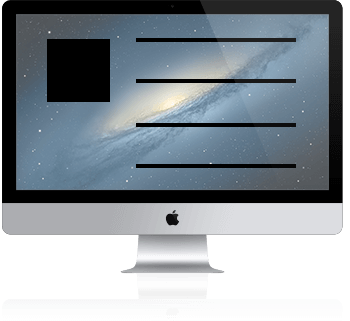
One-pager contains basic information about the owner, whether it’s a company or an individual. This website type typically features the following information:
- nature of company’s business;
- price list;
- contact details and driving directions;
- owner’s profile (optionally).
Usage examples: ideal for startups or newbies. The navigation is down to a few menu items so that the potential clients won’t miss anything – information has to be within a click’s reach, especially the contact details. Due to the minimalistic nature of an one-pager, contact details are what the potential client should see first. Once he got interested, he should be able to get in touch with the company.
Another great thing about one-pager is their simplicity – this form of websites allows for an easy way to interact with the customers. Much like an advertisement banner in the city street, it helps people discover the company’s business, products, or services. Original, well-designed one-pager is something that people tend to like more than some generic page. Keep that in mind when creating an one-pager for your own needs.
There are three common things about every good one-pager: it’s self-descriptive, good-looking, and easy to grasp. If your one-pager checked 3 out 3, it should be able to serve your company’s purpose well, and make you money. Once you got the site structure all lined up, you can start adding functionality here and there, thus bringing your one-pager closer to a nice “Corporate website.”
SEM potential: 9 out of 15: this website type may prove helpful for small firms. It also can be a nice solution for those who want to promote their business on the Internet and need a good start. An one-pager can always be upgraded to a full-scale corporate or theme-based website.
My score:
- SEO – 3/5
- PPC – 3/5
- SMM – 3/5
Cost: $200+: With basic functionality, it’s more than affordable for most people.
2. Theme-based website
 Theme-based website provides you with specific information, relevant to a certain subject.
Theme-based website provides you with specific information, relevant to a certain subject.
Usage examples: this form of website is ideal for various online communities, whether it’s men who are into cars or housewives looking for cooking recipes. Having an audience that grows steadily over time allows you to earn money on such websites. And what’s more, you don’t even have to sell stuff via the website, it might as well be a non-profitable, content-only project. You can easily earn big bucks on contextual advertising, which is what webmasters of theme-based websites do. But keep in mind that the profit-making capacity of your website will depend on the amount and “quality” of its visitors.
SEO potential: 10 out of 15: it’s quite easy to promote such website in its own niche, for example, to showcase your work, lessons etc. Artists, actors, cooks, and fashion designers may find this form of websites quite helpful. It has a wide arsenal of promotion tools.
My score:
- SEO – 5/5
- PPC – 2/5
- SMM – 3/5
Cost: $400+: depends on the supposed functionality and design. If it’s a template-based and basic functionality website, it shouldn’t cost you that much at all.
3. Landing page
 Landing page is designed to promote or sell a product (service). But since we’re all about money-making here, it would be safe to say that the main goal of any landing page is to sell stuff. The information in this kind of websites is usually presented in the form of blocks with no global navigation, which is why you can pretty much call it a “one-page website.”
Landing page is designed to promote or sell a product (service). But since we’re all about money-making here, it would be safe to say that the main goal of any landing page is to sell stuff. The information in this kind of websites is usually presented in the form of blocks with no global navigation, which is why you can pretty much call it a “one-page website.”
Usage examples: landing page is an ideal choice for those of you who want to sell some product or service. Need real life examples? A landing page for a car you want to sell, a landing page for your seminar/webinar or a conference/exhibition. Marketing specialists love landing pages. Once you get it right, a landing page can really boost your website’s commercial performance and miraculously convert visitors to customers. This particular feat makes landing pages a very helpful tool for web-masters and marketing specialists, who use landing pages to return their investments (learn more about ROI here) and cover the expenses on:
- Pay-Per-Click (PPC) contextual advertising campaigns;
- banner advertising campaigns;
- email marketing campaigns which require a certain action from the user (registration, purchase, payment etc);
- marketing campaigns on social media sites, such as Facebook or Twitter, or blogs. In this case, a user is redirected on the advertiser’s landing page to perform a certain action.
Here’s an example: let’s say you’ve just launched a $100-budget marketing campaign with $1 per click. Therefore, you’ll have at least 100 visitors on your company’s website, only two of which will become your clients by performing a certain action (registration, purchase, payment etc). As a result, you will have 2% conversion and a strange aftertaste. But if you’re using a landing page for the same purpose (even if you borrowed this page from some free/paid resource), you will get 2 or 3 times higher conversion without breaking your bank – for the same 100 visitors!
SEO potential: 12 out of 15: landing pages are hard to promote in organic search results, yet they’re perfect for generating leads from contextual advertising and social media targeting. More often than not a landing page will simply pursue one goal – convert users into mailing list subscribers or customers.
My score:
- SEO – 2/5
- PPC – 5/5
- SMM – 5/5
Cost: if it’s an online service landing page, you can do it either for free or for $20+; if we’re talking high-quality, studio-designed landing page, it won’t cost you less than $700. In order to get the most value out of a landing page, you should estimate its design budget very carefully.
4. Corporate website
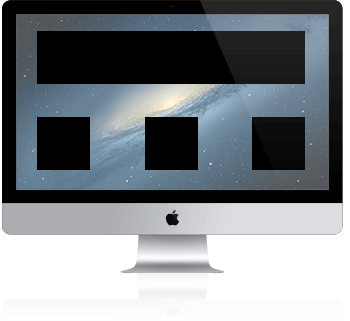 Corporate website provides comprehensive information about the company that owns the website, as opposed to an online business card which contains only basic information. The exact content of a corporate website depends on what company does and how open it wants to be with the site visitors. This form of websites would usually feature various browsing tools, such as site search, event calendar, picture galleries, corporate blog or/and forum. Typical content sections are:
Corporate website provides comprehensive information about the company that owns the website, as opposed to an online business card which contains only basic information. The exact content of a corporate website depends on what company does and how open it wants to be with the site visitors. This form of websites would usually feature various browsing tools, such as site search, event calendar, picture galleries, corporate blog or/and forum. Typical content sections are:
- information about the company or even company history;
- products and/or services;
- prices/price list;
- portfolio and/or personnel/products/services picture gallery;
- news feed and/or company blog;
- job vacancies;
- “Contact us” section and/or information on how to order a product/service;
- testimonials and/or customer reviews;
- information about partners of the company and/or partnership program;
- contact details/banking properties and driving directions.
Corporate websites may often be integrated with internal data systems of the company (CRM, accounting systems). They can also feature restricted-access sections for various groups of users, such as company employees, dealers, contractors, partners etc.
Usage examples: corporate websites may prove useful for companies that want to demonstrate their status or promote their products. Corporate website will often have quality content. You can also use this form of websites to simplify and automate such routine processes as searching for potential job candidates and collecting their CVs, or automatically create bills and send them to your clients – you can do whatever you like as long as it’s reasonable for your company. Corporate websites are common throughout the world and used by most companies.
SEO potential: 15 out of 15: corporate websites are very flexible in all kinds of SEO, but require a significant promotion budget, as they’re usually promoted using a huge list of keywords. Corporate websites possess the widest choice of promotion and branding tools of all kind of websites.
My score:
- SEO – 5/5
- PPC – 5/5
- SMM – 5/5
Cost: $600+: it’s difficult to pinpoint the exact amount of money you may need for your company’s website. A lot depends on the amount of different functions you want to have. A major company website can cost $10,000 or even more.
5. Promotional website
 Promotional website contains information about a certain brand or product. You can easily find everything you need about the brand, product, sales promotions (contests, sweepstakes etc.).
Promotional website contains information about a certain brand or product. You can easily find everything you need about the brand, product, sales promotions (contests, sweepstakes etc.).
Purposes: promotional websites are totally dedicated to a single goal – promote a product, service, event or brand (hence the name). They may also be used for launching and promoting a new brand. Promotional websites are heavily utilized in politics and show business. Many famous companies and manufacturers use promotional websites to market their products more effectively. A good promotional website stands out due to its remarkable design, which focuses mainly on the product, that’s being promoted. Some say, that a company which already has a corporate website doesn’t need a separate promotional site for one of its products or services, but come to think of it – constantly using your corporate website for advertising and promoting products/services may compromise its main purpose. And that’s what promotional websites are for – to present your product/services in the most effective way.
SEO potential: 12 out of 15: thanks to its structure, promotional website can feature quite a few keywords. It also has a wide arsenal of promotion tools. You might want to consider it when promoting a new product/service. Promotional websites can be promoted in Google or Bing organic search, or via contextual advertising.
My score:
- SEO – 2/5
- PPC – 5/5
- SMM – 5/5
Cost: $500+: promotional website with basic functionality and simple design won’t cost you much. However, the better design gets, the more you’ll have to pay in the end.
6. Showcase websites
 Showcase websites feature products/services complete with full description, pictures/video, certificates, technical specs and customer reviews etc. Thus, showcase websites go beyond a regular price-list with its limited scope.
Showcase websites feature products/services complete with full description, pictures/video, certificates, technical specs and customer reviews etc. Thus, showcase websites go beyond a regular price-list with its limited scope.
Usage examples: showcase websites are meant to provide visitors with the information about the product/service and make them want to buy it. In other words, a showcase website generates leads (thus initiating consumer inquiries). This kind of websites is ideal for the companies that offer specific products/services, the cost of which heavily depends on the technical requirements. It is often used by group buying sites since their main goal is to reach a set number of customers ready to buy the promoted product. Showcase websites may feature somewhat complicated functionality, which helps automate many processes.
SEO potential: 15 out of 15: strong promotion potential for retail products and services, along with the wide choice of optimization options. A showcase website can always be upgraded to an online shop.
My score:
- SEO – 5/5
- PPC – 5/5
- SMM – 5/5
Cost: $900+: this website type is a bit pricey, even with stripped-down functionality and minimalistic design.
7. E-commerce
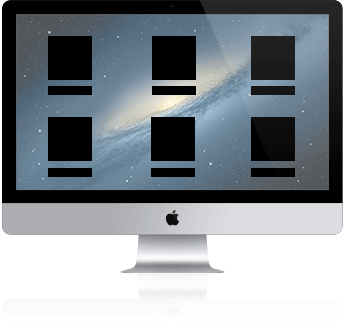 E-commerce is quite similar to the previous kind of website (“Showcase website”), yet it has enhanced functionality. Most eCommerce will feature:
E-commerce is quite similar to the previous kind of website (“Showcase website”), yet it has enhanced functionality. Most eCommerce will feature:
- product catalog, browsed by customers willing to make their purchase;
- E-commerce payment systems, which help customers to purchase a product or service online using their credit cards, payment systems, or electronic funds transfer;
- shipping methods form, allowing customers to choose the preferred method of shipping and see how much it costs;
- personal account, which has all the things a customer may need for smooth online shopping:
- order history;
- purchase history;
- order status;
- sales data;
- a way to contact the shop’s support team;
- payment method settings;
- shipment address settings;
- other fancy stuff.
- live chat, which allows customers to contact shop managers directly;
- automatic in-stock balance update system;
- integration with various data systems (CRM, accounting systems).
Usage examples: the main purpose of eCommerce website design is to facilitate sales in automatic mode. However, they can also generate leads (consumer inquiries), which are ultimately processed by a manager. This form of websites is ideal for “almost fully” automated sales process. It has excellent customer inquiry potential, as well as branding potential, whether it’s just a product or the whole brand. In order to promote it successfully in search results, you will require a hefty sum of money.
SEO potential: 15 out of 15: as a matter of fact, this kind of websites has the most versatile SEO tools potential, but the cost of optimization and promotion can sometimes reach a hundred of thousand dollars per month!
My score:
- SEO – 5/5
- PPC – 5/5
- SMM – 5/5
Cost: $2,000+: the price of web development heavily depends on how elaborate the exact functionality is. A great deal of attention is also paid to UX/UI (User experience/User interface).
8. Information portal
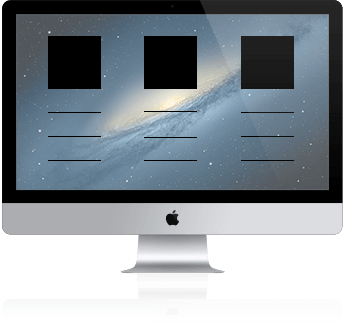
8. Information portal is designed to provide its visitors with the latest news online. It combines various resources and services into a single multi-level structure, updated in real time. News websites work pretty much the same way as their TV counterparts – news channels. Besides obvious news content you can often see all kinds of analytical publications: articles, reviews, comments. Information portal features tons of content, which is unique for the most part; it is designed to handle huge amount of traffic. Websites of this type usually have complex structure and navigation and feature various interactive services.
Usage examples: the main goal of an Information portal is to assist visitors in finding the required information on a certain subject. Certain elements of functionality allow the information on the portal to be easily structured and systemized, which allows for a smooth and pleasant user experience. In this case, the Information portal serves as an alternative to search engines, making it easier to search for various subjects.
Creating an information portal may help your employees operate with the large volumes of data from anywhere they are. At the same time, the company management can always keep the business under control. Many “fine” corporate and individual startup projects end up being another information portal on the web. Such websites are being created at a frantic rate using design templates, which is a pain the butt for those are in for the good reasons.
SEO potential: 10 out of 15: the site’s structure suggests effective promotion. Information portal can feature different kind of websites, therefore a wide array of SEO techniques can be applied to optimization. There are a few limitations though, if compared to other types of websites.
My score:
- SEO – 5/5
- PPC – 2/5
- SMM – 3/5
Cost: $800+: the price depends on the site’s functionality and structure, as many information websites tend to have quite a complicated structure.
There are also many other types of websites – obviously, we can’t go through all of them, but here are some honorable mentions:
Social networks – Facebook, Google+, LinkedIn
Web search engines – Google, Bing etc.
File-sharing services – Bittorrent etc.
Streaming services – Twitch, Youtube etc.
Mail services – Google, Yahoo etc.
Image hosting websites – Flickr, ImageShack etc.
Video hosting websites – Youtube, Dailymotion etc.
Web directories – Dmoz, Yahoo catalog
Classified ads websites – Craigslist, Zillow
Conclusion:
There are a lot of different types of websites out there. “Why do I need to know all of this?” some of you may ask. Well, here’s the answer: if you pick the right website for your own project, you will get the chance to present the information and content in the most pleasant, appealing and natural way.
“But how do I choose the right website for my own project?” some of you may still wonder. First, you should read this article «How to write a creative brief for a website». It covers 9 essential things that will help you get everything right and write a creative brief for your own website.
Then you can easily define which form of website is the best for your own specific purposes. I hope this was useful and will help you make your first steps in the world of the Internet!
The right thing to do would be share this article with your friends on the social networks – just click on one of the icons of social media, it’s that easy.
If you have further questions on the subject, please write them in comments – I’ll be glad to answer.
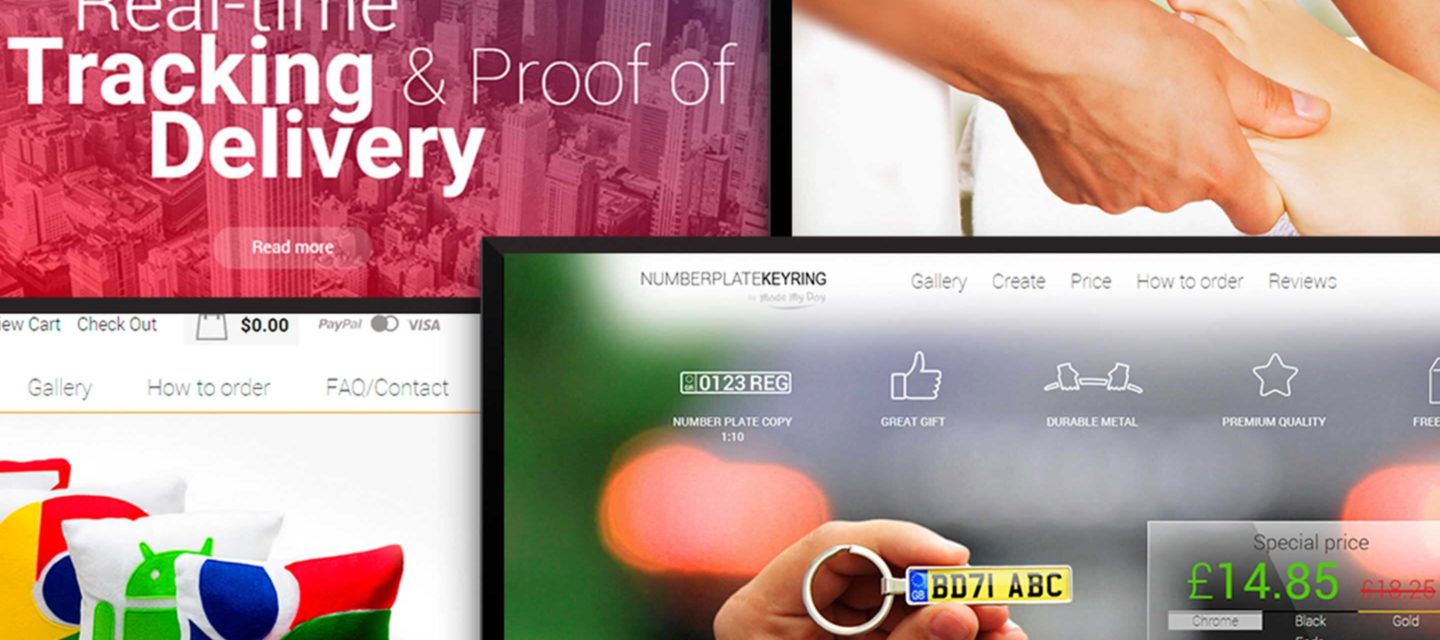


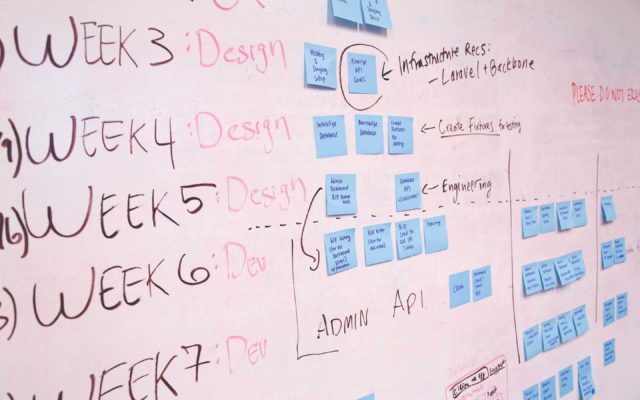

What is a Community site? I haven’t seen such one among those you have used in your article…
Community based web sites consist of forums or message boards. An example of this type of site is a social network styled sites that attempt to get its visitors involved or engaged and then become frequent visitors who return. When developing a community site, pay attention to the particular niche that is in high demand, yet not in plenty.
Hi There! Hey dude! Your article about different types of websites has made my day! Nice piece of writing, so instructive and clear. The best for such Dummies as me!))))
Ha-ha!))) Don’t judge yourself, let others do it! But I’m glad to know that my writing is understandable, maybe one day I will find it in the Guide for Dummies!..
I wanted to thank you for this fantastic read!! I certainly have found key types of websites. I’d like to start personal website, can I hear your ideas about WordPress?
Hello Jamel! WordPress is the easiest way to build a professional looking business website via free templates if you don’t have any programming skills.
Viktor, hello!
Sorry for asking a stupid question) Can you explain what a content management system is?
A Content Management System (CMS) is a web-based tool to allow any authorised user access to edit the website. The idea behind a CMS is that day-to-day maintenance is handled by the client who, typically, has no prior experience in web page programming.
Thanks Viktor, this is very useful piece of writing. By the way, I’ve just written an “about me” page for my niche site. I think it was nicely crafted! Do you find it important to create unique ToS and privacy policy page also?
Hello! I’m glad that it could help you). As for me, I would just use a template. It saves my time.